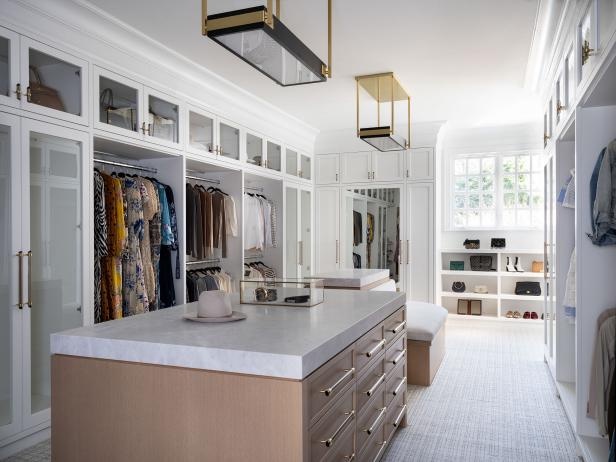Designing a closet may seem like a straightforward task, but it can greatly impact your daily life. A well-organized closet can save you time, reduce clutter, and make your home more efficient. However, creating the perfect closet design at Closet Creation involves several key factors that need careful consideration. We will explore these factors and provide you with valuable insights to help you plan and design a closet that suits your needs and lifestyle.
- Space Assessment
Before diving into closet design, it's essential to assess the available space. Measure the dimensions of the closet area, including its width, height, and depth. Take note of any architectural features like sloped ceilings or awkward corners, as they can influence the layout and organization of your closet.
Consider the location of your closet as well. Is it in your bedroom, hallway, or a separate dressing room? The closet's location will affect its accessibility and the flow of your daily routine.
- Storage Requirements
Understanding your storage needs is fundamental to creating an efficient closet design. Start by making a list of the items you plan to store in the closet, such as clothing, shoes, accessories, and seasonal items. Take into account how many shoes and handbags you have, the length of your dresses and coats, and any special storage requirements like jewelry drawers or tie racks.
Once you have a comprehensive list, categorize your items by type and frequency of use. This will help you determine the most accessible and convenient placement for each category.
- Style and Aesthetic Preferences
Your closet's design should reflect your personal style and complement the overall décor of your home. Consider the aesthetic aspects, such as the closet doors, hardware, and finishes. Do you prefer a sleek, modern look or a more traditional, rustic style?
Furthermore, the colors and materials used in your closet design can enhance the visual appeal of your space. Coordinating the closet's design with the rest of your room can create a seamless and harmonious atmosphere.
- Lighting
Proper lighting in your closet is essential for functionality and aesthetics. Assess the existing lighting in the space and consider adding more if necessary. Adequate lighting makes it easier to see and access your belongings, especially in dark corners or deep shelves.
LED strip lights, recessed lighting, or motion-activated lights are popular choices for closet illumination. Ensure that the lighting is strategically placed to eliminate shadows and provide even coverage.
- Shelving and Hanging Space
The main function of a closet is storage, so the configuration of shelves and hanging space is crucial. Customize the layout to accommodate your clothing and accessories. Double-hang rods are an efficient way to maximize hanging space, while adjustable shelves can adapt to changing needs over time.
Consider incorporating shelves of varying depths to accommodate different items like shoes, folded clothing, and accessories. Shoe shelves or racks can be designed to fit your specific shoe collection, and built-in drawers can help keep smaller items organized.
- Accessibility
Accessibility is a vital factor when planning your closet. Make sure that the most frequently used items are within easy reach. Hang clothing you wear daily at eye level, while less frequently worn items can be placed higher or lower.
If you have a walk-in closet, consider implementing an island or a dressing area to make getting dressed a breeze. You can also add pull-out or pull-down rods to facilitate access to high or low hanging items.
- Organization Accessories
Incorporate organization accessories to enhance the functionality of your closet. This may include pull-out racks for ties and belts, valet rods for planning outfits, or jewelry trays and dividers to keep accessories in order. These accessories can make your closet more efficient and help you maintain an organized space.
- Ventilation
Closets can sometimes become musty or develop odors, especially in humid climates. Ensure your closet has proper ventilation to prevent this issue. You may want to install a vent or fan, or simply keep the closet door ajar from time to time to allow for air circulation.
- Budget
Setting a budget for your closet design project is essential. Custom closets can vary significantly in cost depending on the materials, finishes, and accessories chosen. Establish a clear budget and communicate it with your designer or contractor to ensure your project remains within your financial constraints.
- Professional Help
While designing a closet can be a DIY project, seeking professional help can lead to a more efficient and well-executed result. Closet designers or organizers can provide valuable insight and creative solutions based on their experience.
Conclusion
Planning a closet design requires thoughtful consideration of several key factors, including space assessment, storage needs, style preferences, lighting, shelving, accessibility, organization accessories, ventilation, budget, and the potential involvement of professionals. By taking these factors into account, you can create a closet that not only maximizes storage but also complements your lifestyle and enhances the functionality of your home. Whether it's a walk-in closet, reach-in closet, or wardrobe, a well-designed closet can make a significant difference in your daily routine and overall home organization.


No comments yet